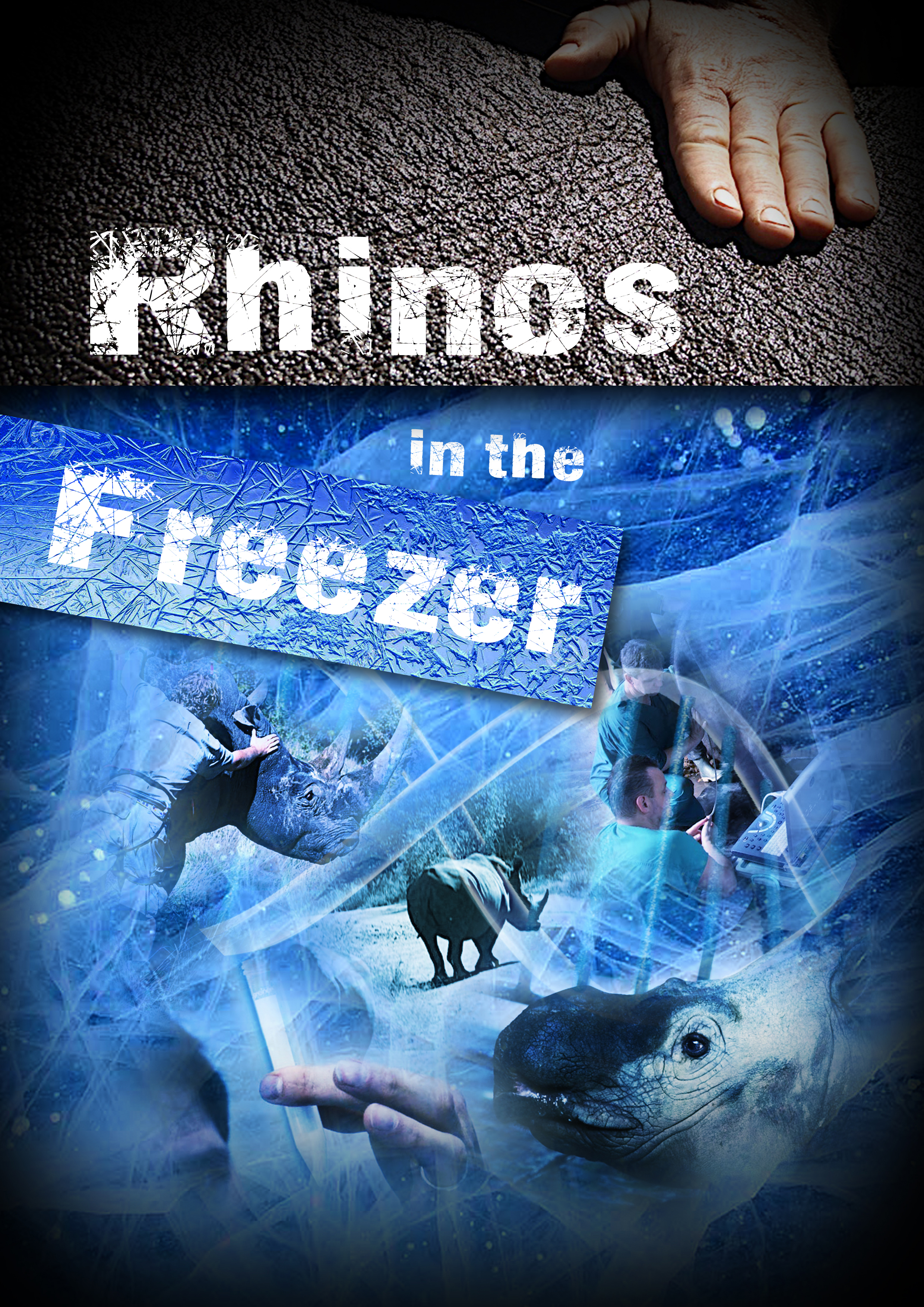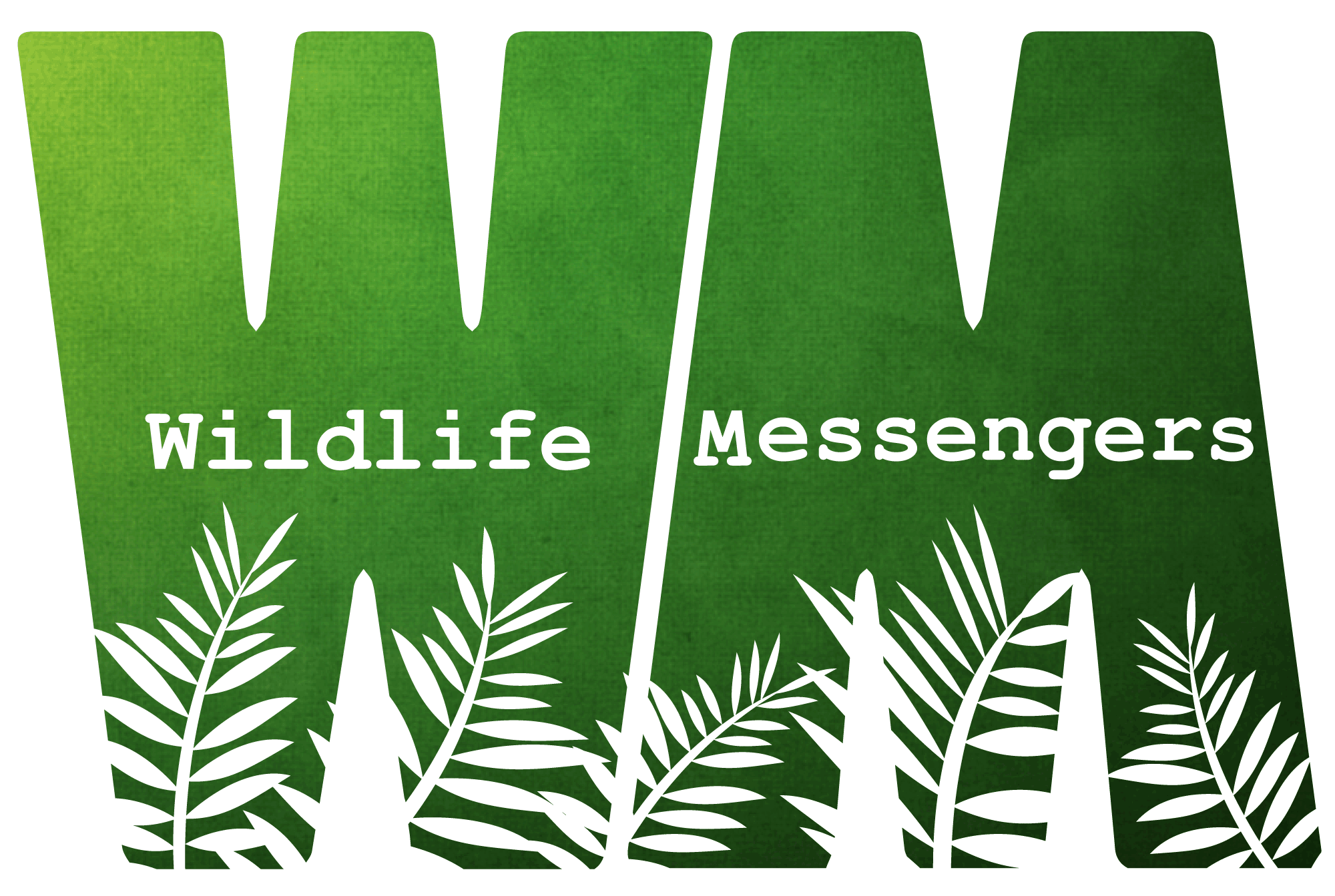Rhinos in the Freezer
Synopsis
 Rhinos are in a retreat. In their constant battle with mankind and changing climate, these prehistoric giants keep losing. From Europe they vanished thousands of years ago, with nothing but faint cave paintings remaining in their wake. In Asia a handful of them are roaming the last fragments of the rainforest. In Africa their survivors are forced behind electric fences, guarded by heavily armed rangers. On the black market the price of rhino horn is skyrocketing. The result is a massive wave of poaching, sweeping through the entire world. Europol issued a warning that organized crime gangs started to steal rhino horns from museums and private collections. Rhinos are wanted around the world. Dead or alive. Still, there is a place where they can find a safe shelter. And that place is in the freezer…
Rhinos are in a retreat. In their constant battle with mankind and changing climate, these prehistoric giants keep losing. From Europe they vanished thousands of years ago, with nothing but faint cave paintings remaining in their wake. In Asia a handful of them are roaming the last fragments of the rainforest. In Africa their survivors are forced behind electric fences, guarded by heavily armed rangers. On the black market the price of rhino horn is skyrocketing. The result is a massive wave of poaching, sweeping through the entire world. Europol issued a warning that organized crime gangs started to steal rhino horns from museums and private collections. Rhinos are wanted around the world. Dead or alive. Still, there is a place where they can find a safe shelter. And that place is in the freezer…
Not the most usual hiding place for a pachyderm, but it seems to be working. Frozen semen samples, ovaries, tissues and reproductive organs do very well in temperatures deep below zero degrees. Conserved within them, lies the precious genetic material – a key factor to the survival of rhinos. But to turn a frozen sample into a living-breathing animal is a great trick indeed. No wonder it has been performed only a few times by leading reproductive biologists. Artificial insemination seems to be working on captive rhinos. But how to transfer that knowledge to where it is needed the most – into the wild?
Follow a team of dedicated scientists as they venture deep into the jungles of Malaysia, fly over the grasslands of South Africa or crisscross the world’s zoos. Everywhere they stretch the limits of our knowledge, develop and test new tools and veterinary protocols. They apply cutting edge technology in order to collect, conserve and use the invaluable genetic material of the rhinoceros.
Watch it NOW!
Treatment
Rhinos in the Freezer is an award-winning scientific conservation documentary filmed and produced by Filmjungle Studio, Budapest. Inspired by the birth of world’s first AI rhino baby in the Budapest Zoo, Filmjungle team spent weeks on distant locations, in zoos and laboratories. The main characters of the documentary are Thomas Hildebrandt, Frank Göritz and Robert Hermes from IZW Berlin. This institute is where samples are stored and where new methods are being developed in order to successfully inseminate highly endangered species – among them, rhinos.
The storyline of the Rhinos in the Freezer has a significant European touch. In the 1950s Czech naturalist Josef Vagner led several expeditions to Africa. He returned with a collection of wild animals, including five Northern White Rhinos. Back then no one knew that this small group will serve as the safe deposit for the subspecies. In the following years, civil wars and poaching erased the subspecies from the wild. The Northern White Rhinos (Ceratotherium simum cottoni) became extinct in Africa. Back in Europe however, things seemed to improve for the rhinos. Captive rhino populations survived and year 2000 saw the birth of the famous Millennium Baby in the Dvur Kralove Zoo. In Germany, researchers of the Institute for Zoo and Wildlife Research started to develop new reproductive technologies for endangered species. Their efforts came to fruition in 2007 when a Southern White Rhino – the first rhino ever conceived by artificial insemination – was born in Budapest, Hungary.
From black and white archives through shaky expedition videos to ultra-HD laboratory scenes, Rhinos in the Freezer is built on a wide variety of footage. We see how Layla, world’s first AI baby rhino is born, how scientists – for the first time in the history of veterinary science – collect the semen from wild-raging rhino bulls, how conservation experts capture one of the last Sabah rhino on the island of Borneo and we follow the desperate attempts to save Northern White rhinos from extinction.
Film Specifications
Title: Rhinos in the Freezer – Freeze or die
Duration: 52 mins
Languages: English, Hungarian, Czech
Filming Locations: South Africa, Kenya, USA, Germany, Malaysia, Hungary
Production: Filmjungle.eu Society and Wildlife Messengers
Commissioned by: Media Council of Hungary, Czech Public Television, Czech Television Creative Team, Vomácka Martin, Blaas Roman, Veronika Korcakova, Barbora Svobodová, Tereza Adámková, Faruk Mahrezi
Award: International Film Review / Scientific Documentaries of the International Nature Film Festival (2019)
IMDb: www.imdb.com/title/tt9306586


Cast & Crew
Director – Attila David Molnar
Written by – Attila David Molnar, Cintia Garai, Robert Carrubba
Filmed by – Zsolt Marcell Toth, Balazs Tisza, Janos Lerner, Cintia Garai, Benjamin Sivo, Marco Casino, Agnes Kiss, Gabor Kotanyi, Szabolcs Mosonyi, Milan Jurkovics, Poroszka Magyar Zsolt
Archive Footage – Kes and Fraser Smith, Jiri Bálek, Mihai Besesek
Archives provided by – Mihai Besesek, Pond5, Czech Public Television, Lemuria TV, Filmjungle Studio, TZSM Productions
Still Images courtesy of – Jan Stejskal, Zoo Dvůr Králové, Ami Vitale, National Geographic, Kes and Fraser Smith, Garamba National Park, Zdenek Čermak, Tomas Hajnys, Zoo Dvůr Králové, Ol Pejeta Conservancy, Kenya
Aerial Footage by – Balázs Tisza & Milán Jurkovics
Sound – Zsolt Tamás & Simon Koch
Musical Editor – Zsolt Tamás
Foley Sounds – Kornél Lukácsi
Animations & Infographics by – Kincső Palotás
Additional Animations by – Erik Vidos, Emese Silimon, Kriszta Mwajas, Áron Gauder
Translation – Robert Carrubba & Cintia Garai
Storyline Development – Enikö Kubinyi, Vanda Molnár, Vilja Molnár, Madelaine Westwood, Kriszta Mwajas
Production Managers – Bence Varga Kittner, Zoltán Brinner, Péter Herdlicska
Post Production Management – Zsolt Tamás
Narrated by – Nick Thorpe
Scientific Editors – Cintia Garai & Csaba Gönye
Distributed by – Pauline Mazenod, Windrose.fr
Co-Produced by:
Zsolt Marcell Tóth, Filmjungle.eu
Martina Šantavá, Czech Television
Cintia Garai, Wildlife Messengers
Attila Dávid Molnár, Filmjungle Society
Scientists – Thomas Hildebrandt, Robert Hermes, Frank Göritz, Cesare Galli, Silvia Colleoni, Heribert Hofer, Petra Kretzschmar, Miriam Brandt, Chris Walzer, Gábor Csorba
Scientific Supervisor – Thomas Hildebrandt
Veterinarians – Endre Sós, Viktor Molnár, Zainal Zainuddin
Ice age painter – Áron Gauder
Modern painter – Anton Molnár
Auction Leader – Kristian Jarmuschek
Conservation Experts – Kes Smith, Esmond Bradley, Martin Dana Holeckova, John Payne, John Hanks, Josef Vagner, Jan Stejskal, Nga Nguyen
Coordinators – Steven Seet, Berlin; Jan Stejskal, Dvůr Králové; Miriam Brandt, Borneo; Petra Kretzschmar, Malaysia; John Hanks, South Africa; Krisztina Koronczy, France; John Payne, Tabin Wildlife Reserve
Crime Scene Reproductions – Gábor Stodulka & George Olah
IT Support – Csaba Molnár & Géza Kuti
Special Thanks to:
Heribert Hofer, Gábor Stodulka, Péter Czifra, George Olah, Zoltán Korsós, Márta Kovács, Shaun Rambert, John Payne, Gábor Csorba, Csaba Tóth, Elodie Sampere, Anthony Roberts, András Molnár
The producers wish to thank:
Institute For Zoo And Wildlife Research
Budapest Zoo
Borneo Rhino Alliance
Hungarian Natural History Museum
Dvur Kralove Zoo
Ol Pejeta Conservancy
Lapalala Wildlife Reserve
Tabin Wildlife Reserve
Timeline
-
2007
First AI rhino was born
The Rhino film project started when Layla, the world’s first artificially inseminated rhino was born in the Budapest Zoo, and we filmed the event.
-
2008
Filming in Africa
We filmed how veterinarians collected the first sperm samples from wild rhinos in Africa.
-
2011
Filming in Borneo
Since 2011 we have been filming the Bornean Rhino (Dicerorhinus sumatrensis harrissoni) a critically endangered subspecies of the Sumatran Rhino.
-
2017 Jun
Extra funding acquired
A grant from the Hungarian Media Council was given to a new documentary titled Rhinos in the Freezer.
-
2018
Postproduction
Postproduction work of the documentary.
-
2019 Jan
Release
International release of the documentary.

